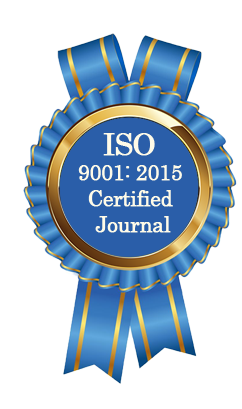| All | Since 2020 | |
| Citation | 105 | 60 |
| h-index | 4 | 4 |
| i10-index | 3 | 2 |
WJAHR Citation 
Login
News & Updation
Best Article Awards
World Journal of Advance Healthcare Research (WJAHR) is giving Best Article Award in every Issue for Best Article and Issue Certificate of Appreciation to the Authors to promote research activity of scholar.
Best Article of current issue
Download Article : Click here
Indexing
Abstract
EVALUATION OF NIPPLE DISCHARGE IN WOMEN ATTENDING AL-ELWYIA TEACHING HOSPITAL, BAGHDAD, IRAQ
*Reem Salim Mohammed, Besmah M. Ali and Najim Al-Khalidy
ABSTRACT
Background: Nipple discharge, while often causing anxiety, is usually benign or physiological, accounting for 2-5% of breast cancer clinic referrals. Physiological discharge is often bilateral, emerging from multiple ducts, andcan be clear, white, yellow, green, or brown. It's important to note that nipple discharge can be the initial symptomin 5-15% of breast cancer cases. Sometimes, this discharge can be induced by manipulation of the breast ornipple. The study aims to identify common nipple discharges related to serious breast diseases, differentiatebetween physiological and pathological discharges, analyze the age distribution of affected women, and explorethe relationship between nipple discharge and breast carcinoma. Method: Cross-sectional retrospective researchof 100 female nipple discharge patients from November 2022 to June 2023 at Al-Elwyia Teaching Hospital. Theresearch included all females with breast illnesses and discharged but omitted those with breast lactation. Allfemale data collected: age (years), breast discharge side (bilateral, left or right). Also questioned about massfeeling. ache in the breasts. Any family history of breast cancer, and lastly what the expert diagnostic anddischarge reasons are, benign or malignant. Results: In a study of 100 females with breast disease, the mean agewas 41 years, with a higher prevalence of benign conditions in those presenting with clear, green, or white nippledischarge. Bloody nipple discharge, seen in 28% of cases, was significantly associated with breast masses and ahigher likelihood of breast carcinoma diagnosis. No significant correlation was found between discharge color andpatient age, breast pain, or family history, but there was a notable association between discharge side and breastmass presence. Conclusion: Nipple discharge occurs in various age groups, with bloody discharge linked tohigher malignancy risk, especially when combined with a breast mass, whereas clear, green, or white dischargestypically suggest benign conditions. Accurate diagnosis and management require a comprehensive, multi-facetedapproach, regardless of the discharge's characteristics.
[Full Text Article] [Download Certificate]
